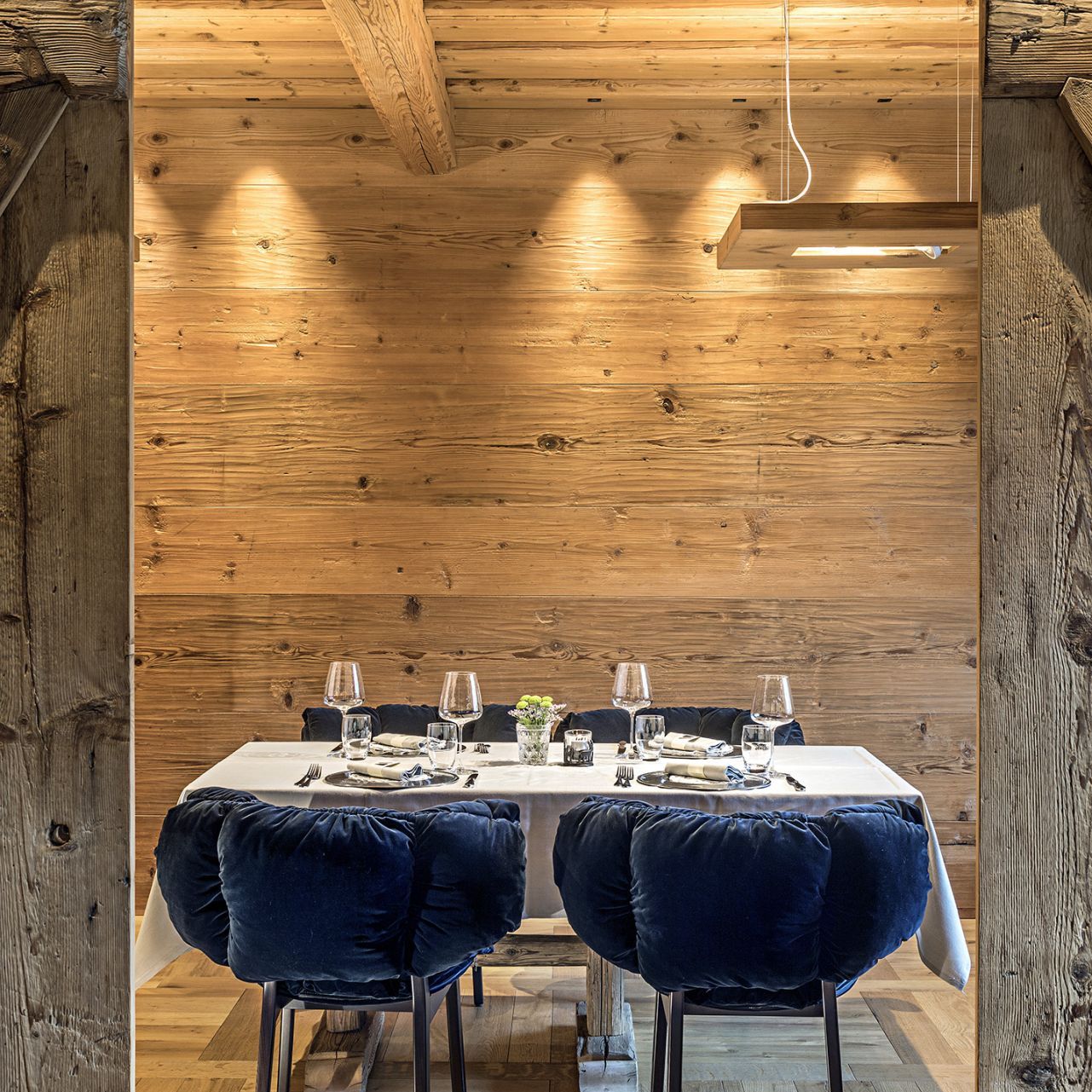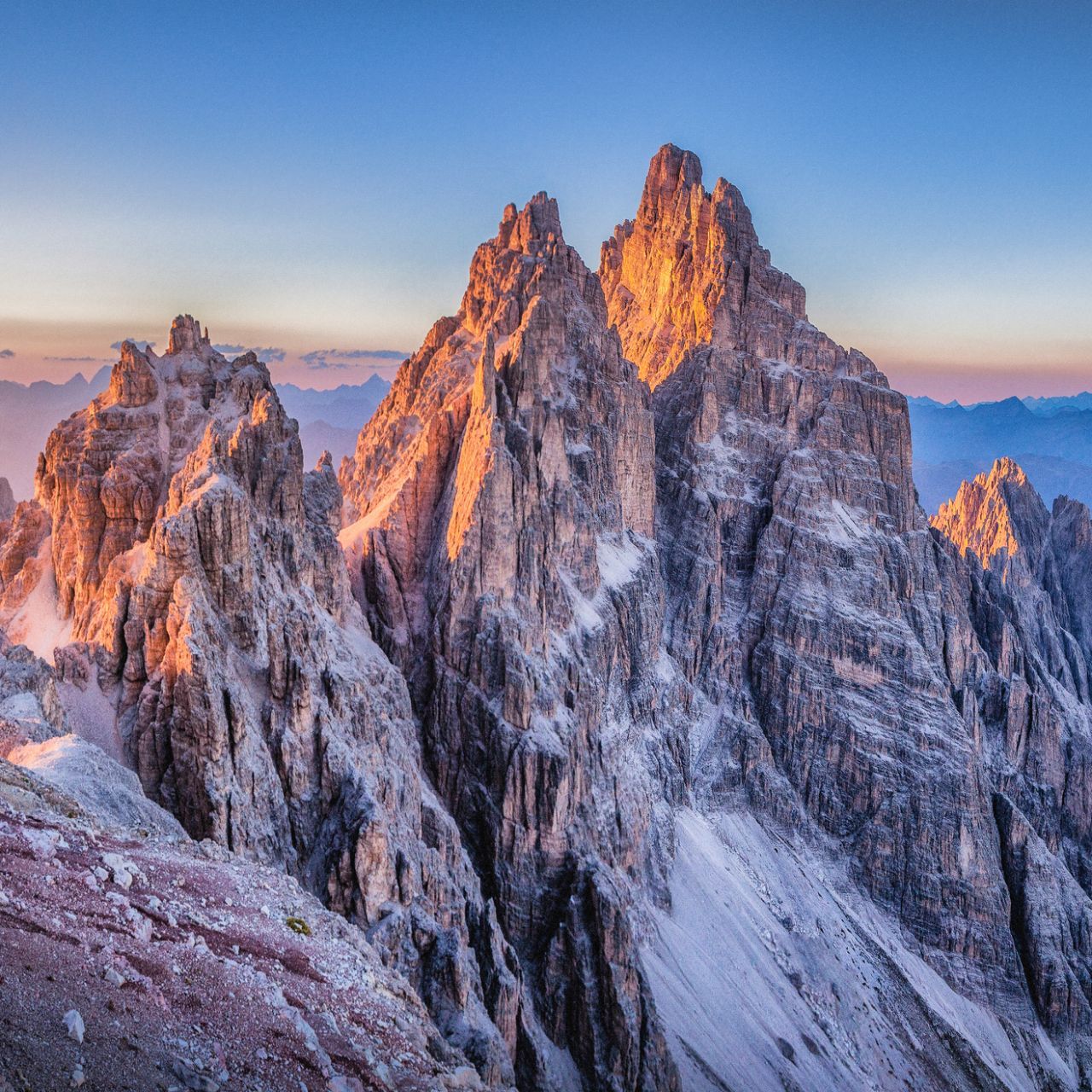October 2023
Laura Arrighi
Hospitality at High Altitude
In Cortina d’Ampezzo, Claudio Alverà, patron and Chef of the Dolomiti Lodge Alverà, tell show Alpine Tradition meets modernity.
In Cortina d'Ampezzo, Edra Magazine visits Claudio Alverà, chef and owner, with his brothers, of the Dolomiti Lodge Alverà. The valley where it stands, 1224 metres above sea level, is surrounded by mountains that have been included in the UNESCO World Heritage list. In its exclusive dimension, the Dolomiti Lodge is one of the facilities that will host one of the most important winter sport races, the Ski Mountaineering World Cup, in February 2021. The Dolomiti Lodge is the new star of luxury hospitality in Cortina D’Ampezzo. A unique resort, not least because of its restaurant, where the warmth of alpine tradition combines with the elegance of modernity and first-rate service. Here, amidst natural materials, sleek wood panels and a sophisticated interior design, the Pack by Edra, the sofa with a bear, finds its ideal home.
The hotel industry is getting a makeover, driven by the evolving tastes and lifestyles of an educated, cosmopolitan and curious clientele that is looking for an unconventional experience.
What is the personal twist you have given to your offering?
We have conceived the Dolomiti Lodge as a boutique hotel focussed on tailor-made services, with special attention to the environment and new technology. A choice that has also been dictated by the transformation of the hotel system. In the past, people mainly built big hotels, with excellent but often unimaginative services. The mentality has changed, the reality of tourism has changed now. Of course, people like to socialise but in a more intimate and somewhat exclusive way, in a tailor-made dimension, homely yet outstanding. People are more well-travelled and worldly, so they have become more adaptable yet more demanding. Some time ago, we had a guest who came from a small island off the coast between New Zealand and Australia, with a population of eight hundred. Of course, the new technology gives visibility to small hotels like ours as well, so now they can be found and enjoyed by those tourists who look for a genuine experience. In the past, it was difficult to convey what you could offer, but the digital revolution has made this easier, now.
Speaking of services, people look for top-notch hotels that reflect their ideals, especially in terms of comfort, sustainability and environmental care, and where they are taken care of but that also offer them unique experiences, taking them to discover the local traditions, the sights and the culture. For instance, we are planning a simple but exciting service, that is, an alpine guide taking our guests up to a chalet that is completely hidden by greenery, then eating a plain meal with them, while telling them the history and the anecdotes about those lovely places and enjoying the silence of the mountains. This is a beautiful thing, an out-of-this-world experience. Finding uncontaminated and fairly unknown spots is really exclusive today.
Maybe a boutique hotel is a first-class platform to build an increasingly tailor-made experience on.
People are increasingly appreciative of the chance to interact with someone who is deeply rooted in a place. The fact my family has been here for over three hundred years and is very knowledgeable about this area and the people who live here, is essential for the guests, even just to get their recommendations. This kind of tourism is not for everyone, but we have found that there is a share of customers who are resolutely looking for it, and we know how to please them.
What story and experiences does the Dolomiti Lodge Alverà convey?
We are still following some of the cues that we were given by Matteo Thun, the architect who had worked out the first project, especially in the details of the rooms, which have large windows to enjoy a perfect view of famous Tofane mountains, and more confortable and welcoming bathrooms. As to the interior design, we worked with local craftsmen, even well known ones, who gave us a more traditional vibe.
Why did you choose the Pack to welcome the guests into the Lodge?
The Pack is at the main entrance, to welcome the guests of the restaurant – which is open to everyone – and of the suites. When we stepped into the new place, there was a problem: Italians don’t like to eat in on-site restaurants, which is normal for foreigners, instead. This left out a share of potential guests.
In the first project we worked out, the entrance had been laid out in the classic ‘two sofas and tables’ pattern that looks like the traditional waiting room of a hotel. However, this is what it felt like to the customers of the restaurant too. I needed something different, something that did not feel like that. It was October 2017, there was the Hospitality Exhibition in Milan, where I went to look for some interior design solution that I didn’t find. So, I decided to go out for dinner. Later on, I asked a taxi to drive me to a club, but I was refused entry, apparently because I was wearing the wrong clothes, as in that place T-shirts outnumbered the more classic shirts. Slightly disappointed, I didn’t instantly realise that that was a great stroke of luck. Actually, while I was strolling around the streets to appreciate the beauty of an empty Milan, I serendipitously bumped into a big, black, furry thing behind the window of an interior design store. I started to look at it from every angle, it looked like a sofa shaped like a supine bear, and I had an epiphany: this is just what I need! And three more interior design solutions have come out of the Pack as well. When I showed the sofa to the artist who was developing the idea of a chimneypiece at the entrance, he revolutionised the first design and changed it into a grey chimneypiece that recalls the shapes of the Tofana mountain. The bear – ours was a white one – lying on the ice pack is asleep in front of his fire. Finding this beautiful, functional piece was a real surprise, because you can sit on it all the way around.
We have been one of the very first to have Pack in Cortina. Those who come here fall under its spell and don’t want to know whether they are in a hotel or in a restaurant, it feels more like they are in a friend’s living room.
What are your future plans?
We are planning to make a 300 square metre suite, with all comforts. Generous main rooms, guest rooms, a large living area ready to welcome the guests, a dining room with an open kitchen, and a spa. We chose a Grande Soffice for the living room. We want to provide a few unique services: a person taking care of the guests 24 hours a day, an alpine guide who plans the excursions and adapts them to the guest’s skills and the weather. The open kitchen is a deliberate choice. We are planning to include a list of chefs, including starred ones, who may at times cook in the guests’ homes, thus building a personal relationship with them. We want to provide a service that has been planned down to the tiniest detail and that fits each guest like a glove. We want to fulfill every wish with the greatest care and attention.
Your opinion about Edra?
It is unique, it is in a class of its own. I have been impressed by its sofas, their features and size. We hit it off right away. I was impressed and amused that many of our guests recognised the product straightaway, and they told me they have it in their homes around the world. This has strengthened our bond. In addition, the story of the Pack sofa is nothing short of intriguing, and it makes you think … but I suggest you should let Edra tell you that story.
 |
Laura Arrighi Architect with a PhD in Design, and freelance web writer and editor. She mainly works in interior decoration, design and fashion and has a special interest in the hybridization of different disciplines. She juggles writing, research, teaching and design, as she works for public institutions and some of the most important Italian architectural firms. |


















